Aerobic Exercise
What is an Aerobic Exercise?
Aerobic exercise is sometimes known as “cardio” — an exercise that requires the pumping of oxygenated blood by the heart to deliver oxygen to working muscles.
Aerobic exercise stimulates the heart rate and breathing rate to increase in a way that can be sustained for the exercise session. In contrast, anaerobic (“without oxygen”) exercise is an activity that causes you to be quickly out of breath, like sprinting or lifting a heavy weight.
Examples of aerobic exercises include cardio machines, spinning, running, swimming, walking, hiking, aerobics classes, dancing, cross-country skiing, and kickboxing. There are many other types.
Aerobic exercises can become anaerobic exercises if performed at a level of intensity that is too high.
Aerobic exercise not only improves fitness; it also has known benefits for both physical and emotional health.
Aerobic exercise can help prevent or reduce the chance of developing some cancers, diabetes, depression, cardiovascular disease, and osteoporosis.
An aerobic exercise plan should be simple, practical, and realistic. Specific equipment (such as cardio machines) may be used but is not necessary for successful aerobic exercise.
Types of Aerobic Exercise
Actually, the best aerobic exercise depends on the level of fitness. Aerobic exercise is a moderate-intensity workout that extends over a certain period of time and uses oxygen in this process. Well, in these years, the practice of aerobics has become the most happening workout trend among the youth. Not only is performing aerobic exercise interesting but also is very beneficial for health. There are diverse types of aerobics such as fitness, water aerobics, step aerobics, swimming, kickboxing, fitness walking, inline skating, bicycling etc.
Here we have more examples:
Low-Impact Aerobic Exercise
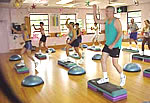
There exist, people, who can’t perform the high-intensity workout because maybe they have some health problems or poor health conditions. For such people, low-impact aerobics is the precise workout choice. Low-impact aerobic exercise comprehends rhythmic movements, with exercising of the large muscle groups.
Water Aerobic Exercise
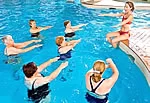
Water aerobic exercises are an agreeable way to exercise over the hot summers. Maybe the workout can seem like one splashing surrounding the pool waters, yet those who are seriously into water aerobic exercise claim it’s an excellent method to burn out unwanted flab from the body and build inner strength. In effect, health experts declare that water aerobic exercise is good for people ailing from arthritis and other problems many times.
Step Aerobics
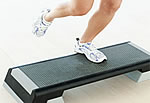
This kind of exercise is a newer version and an interesting technique of aerobics. Conventional aerobics are practiced on the floor: you discover a series of dance steps such as the Pony or the Jazz Square, which are often done in four, two steps taking you in one direction, two more taking you in the other direction.
Dance Aerobics
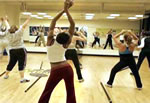
Aerobic dance integrates exercise and dance movements into routines that are practiced with music. Many dance ways are used, including ballet, jazz, and disco. Aerobic dance classes integrate fat-burning aerobics with the development of muscle and stretching exercises.
Your foot is on the ground at all times. This kind of aerobic is slower and it is simpler to do than intermediate and advanced classes.
Sport Aerobics
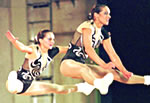
Sport Aerobics is a hard and competitive sport that has a singular connection between aerobic choreography and gymnastics elements. This sport generates a chance for adolescents and adult individuals to compete in a sport that demands less risk than gymnastics while keeping the artistic quality and fun of aerobics.
Aerobic Exercise Moves
Aerobic exercise is good for each person. Aerobic fitness moves integrate rhythmic calisthenics or dance moves with stretching and strength training routines to provide a full-body exercise experience.
Here are some moves you need to give your body a full aerobic workout:
Warm-Up Moves
Warm-Up Moves Aerobic moves that change the heart from a resting heart rate to a warm-up rate start slowly and build in energy and intensity. Walking or marching in place is the most regular warm-up aerobic move, with your steps deepening into lunges at the end of the warm-up to add intensity, energy and increase the circulation of blood to the muscles. The other first phase moves comprehend stepping from side to side and moving the arms at waist level or higher.
Aerobic moves over the warm-up phase should also comprehend a gentle stretch of each of the major muscle groups, including the lower back.
The warm-up phase of an aerobic workout should be from 5 to 10 minutes. The objective during the warm-up phase is to elevate the body’s core temperature, warm up the muscles and joints, and get ready the body for the training portion of the workout.
Aerobic Moves in the Zone
Aerobic Moves In The Zone The next phase of your workout carries your body toward your target heart rate. The intensity of the movement grows and the pace of the movement grows. Some aerobic moves are universally recognized to augment intensity; for example, stopping the body’s momentum and moving the body in the contrary direction is a high-intensity move. For this reason, is why aerobic routines comprehend a lot of back-and-forth movements and up-and-back movements in the middle part of the workout.
Lifting the weight of the body is another high-intensity aerobic move. Leaping, hopping, and powering through a move are all high-intensity actions.
This part of the workout should be from 15 to 25 minutes, with intensity building at the beginning of the session, peaking mid-session, and subsiding toward the end of this phase of the aerobic workout.
Cool-Down Aerobic Moves
Cool-Down Aerobic Moves The last segment of an aerobic exercise workout is the cool-down and stretch periods. The intense movements terminate, the pace of the workout decelerates, and the activity returns to the modest, gentler motions of the warm-up phase. You should not stop exercising abruptly without this cool-down phase. Maybe, you could sense dizziness and could collapse if you do. Instead, delay the pace of your exercise until your heart is beating fewer than 100 times per minute.
Terminate your aerobic moves workout by stretching all the muscles you exercised to help them return to their normal length, increase your flexibility, and to keep your muscles flexible and toned.
THE BEGINNING
It all starts with breathing. The average healthy adult inhales and exhales about 7 to 8 liters of air per minute. Once you fill your lungs, the oxygen in the air (air contains approximately 20% oxygen) is filtered through small branches of tubes (called bronchioles) until it reaches the alveoli. The alveoli are microscopic sacs where oxygen diffuses (enters) into the blood. From there, it’s a beeline direct to the heart.
AEROBIC ROUTINE
Aerobic Routine There are several millions of Americans that train with some form of aerobics routine or the other and aerobics routines have become a sport that is a pleasure to perform for losing weight and staying in shape. The most common aerobics routines are the low-impact routines and dance besides is a preponderant factor that has been inspired by ballet, salsa, and even hip-hop. The aerobic routine serves to increase cardiopulmonary efficiency besides strengthening the heart and lungs. Additionally, the aerobic routine
should also assist to increase blood circulation and lower cholesterol levels as well as reduce stress and anxiety. Being a somewhat hard exercise form, the aerobics routine maybe requires profound preparation and wise election, which should ensure that proper equipment is used, to avoid being injured.
A sample schedule for the beginner’s fitness enthusiast:
DAY ONE:
You should take an easy twenty-minute walk to a beautiful bright place. Look for a friendly place to walk, and avoid pollution. If you can’t find one, maybe you can go to a park, beach, grassland or the countryside away from pollution. You require being able to keep up an interesting conversation. If you are in oxygen debt you won’t burn calories as well so take it easy at first. Upon returning, use approximately ten or fifteen minutes of stretching.
You should practice it periodically; otherwise, the extra calories can accumulate in the thighs or butt. When you begin with some periodic activity, the brain starts to think this body is active and needs to increase its metabolism. Then the brain will get to a higher metabolic level. As you augment your exercise program you will have more byproducts known as free radicals. This is the argument for us to work with nutrition as well because you need to increase the antioxidants to keep the body healthy from free radicals.
DAY TWO:
Just stretch for ten to fifteen minutes. If you find a pool, maybe you can choose to swim for ten to fifteen minutes.
DAY THREE:
Walk fast for twenty-five minutes. Stretch for fifteen, or if you have it down, it could only take ten minutes to get a fantastic stretch.
DAY FOUR:
Swim and stretch for at least twenty minutes and ten respectively.
DAY FIVE:
You might miss one. Or walk maybe longer and easy or hard depending on how you feel.
DAY SIX:
Walk a good distance faster for thirty minutes. If you feel tight walking, stop after you break into a light sweat and stretch for a few minutes. Regarding the legs and gluteus muscles. Then continue, finishing up with a good ten-minute stretch.
DAY SEVEN:
If you didn’t miss one day, consider an easy walk, swim or stretch, or maybe do something with family or friends. If you got distressed at all during the week, then rest and just stretch or swim.
Keep this program until you may be able to walk thirty minutes without losing your breath at all. This can last two weeks for most people and up to four weeks for others. If it takes you longer, stay with twenty-five minutes for two months, and then move to the next level. If within two weeks your body serves you well, you can proceed to the next level.
Keep on the following day with an energetic walk for thirty minutes. Now we will begin to burn some fat. From now on, your workouts should last approximately forty-five minutes. As you each time get stronger, your hard days go by like your easy days, when you first started. Walking can escalate to five times per week within the first few months, depending on your body. At this level, it’s not as critical as it will be when we start the strengthening program using weights, running, or strengthening exercises.
SIX TO EIGHT WEEKS:
After six or eight weeks, begin your strength-training program. Once again, listen to your body. If you don’t feel quite ready at six weeks, take eight. You can go in either of two directions with this addition to your program, with diverse levels of intensity depending on your body and your abilities.
If you are able and you are willing to run for your particular objectives, you may now commence to run. Begin with simple jogging for 20 minutes every day, and weight training every other day. Running at this time should be at least three days a week, the same for weight training. There is some evidence, nevertheless, that we could get by with two days of weight training and still do okay. Have one day of rest. The day you rest should be a very easy workout, stretching, swimming, or family fun.
GETTING TO THE HEART OF IT
The heart has four chambers that fill with blood and pump blood (two atria and two ventricles) and some very active coronary arteries. Because of all this action, the heart needs a fresh supply of oxygen, and as you just learned, the lungs provide it. Once the heart uses what it needs, it pumps the blood, oxygen, and other nutrients out through the large left ventricle and through the circulatory system to all the organs, muscles, and tissues that need it.
A WHOLE LOT OF PUMPING GOING ON
Heartbeats approximately 60-80 times per minute at rest, 100,000 times a day, more than 30 million times per year, and about 2.5 billion times in a 70-year lifetime! Every beat of your heart sends a volume of blood, along with oxygen and many other life-sustaining nutrients, circulating through your body. The average healthy adult’s heart pumps about 5 liters of blood per minute.
OXYGEN CONSUMPTION AND MUSCLES
All that oxygen being pumped by the blood is important. In science, it’s labeled VO2, or the volume of oxygen consumed. It’s the amount of oxygen the muscles extract, or consume from the blood, and it’s expressed as ml/kg/minute (milliliters per kilogram of body weight). Muscles are like engines that run on fuel (just like an automobile that runs on fuel); only our muscles use fat and carbohydrates instead of gasoline. Oxygen is a key player because, once inside the muscle, it’s used to burn fat and carbohydrate for fuel to keep our engines running. The more efficient our muscles are at consuming oxygen, the more fuel we can burn, the more fit we are, and the longer we can exercise.
Aerobics and Fitness
The average sedentary adult will reach a level of oxygen consumption close to 35 ml/kg/minute during a maximal treadmill test (where you’re asked to walk as hard as you can). Translated, that means the person is consuming 35 milliliters of oxygen for every kilogram of body weight per minute.
That’ll get you through the day, but elite athletes can reach values as high as 90 ml/kg/minute! They may have good genes for one, but they also train hard. And when they do, their bodies adapt. The good news is that the bodies of mere mortals like the rest of us adapt to training too.
The heart gets stronger and pumps more blood with each beat (larger stroke volume). Elite athletes can have stroke volumes more than twice as high as average individuals. But it’s not just that. Conditioned hearts also have greater diameter and mass (the heart’s a muscle too and gets bigger when you train it), and they pump efficiently enough to allow for greater filling time, which is a good thing because it means that more blood fills the chambers of the heart before they pump so that more blood gets pumped with each beat.
Greater stroke volume means the heart doesn’t have to pump as fast to meet the demands of exercise. Fewer beats and more stroke volume mean greater efficiency. Think about a pump emptying water out of a flooded basement. The pump works better and lasts longer if it can pump larger volumes of water with each cycle than if it has to pump faster and strain to get rid of the water. High stroke volume is why athletes’ hearts don’t pump as fast during exercise and why they have such low resting heart rates; sometimes as low as 40 beats per minute, whereas the average is 60-80 beats per minute.
Downstream from the heart are your muscles, which get more efficient at consuming oxygen when you do regular aerobic exercise (remember, “consuming” oxygen means that the muscles are taking the oxygen out of the blood). This happens because of an increase in the activity and number of enzymes that transport oxygen out of the bloodstream and into the muscle. Imagine 100 oxygen molecules circulating past a muscle.
You’re twice as fit if the muscle can consume all 100 molecules than if it can only consume 50. Another way of saying it is that you’re twice as fit as someone if your VO2 max is 60ml/kg/min. and theirs is 30ml/kg/min. In terms of performance in this scenario, you’ll have more endurance because your muscles won’t run out of oxygen as quickly.
Mitochondria inside the muscle increase in number and activity. Mitochondria are the powerhouses of your cells. They do all the heavy-duty work to keep you moving. They use oxygen to burn the fat and carbohydrate that makes you go. The good news is that they increase in number and activity, by as much as 50%, in just a matter of days to weeks in response to regular aerobic exercise in adults of all ages.
FAT AND CARBOHYDRATE BURNING
Fat and carbohydrate are the fuels our muscles burn. The difference between them is that fat is high-test; it contains 9 calories per gram whereas carbohydrate has only 4, so you get more energy and can go farther on a gram of fat than on a gram of carbohydrate. You want to burn fat because it’s such an efficient fuel, plus it’s nice to lose some of your excess fat! The catch is that you need more oxygen to burn fat because it’s denser than carbohydrates. The good news is that your body gets better at using oxygen and burning fat when you do regular aerobic exercise; as I described, your heart pumps more blood, your muscles consume more oxygen, and you have more mitochondria.
Difference Between the Aerobic and Anaerobic Exercise
AEROBIC EXERCISE is an activity that stimulates your heart rate and breathing to increase but not so much that you can’t sustain the activity for more than a few minutes. AEROBIC means “WITH OXYGEN,” and ANAEROBIC means “WITHOUT OXYGEN.” Anaerobic exercise is the type where you get out of breath in just a few moments, like when you lift weights for improving strength, when you sprint, or when you climb a long flight of stairs.
Benefits of Aerobic Exercise
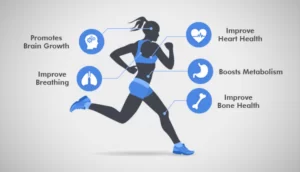
STRENGTHEN THE HEART
Aerobic exercise training is excellent for strengthening hearts and lungs. During these exercises, the tissues demand more oxygen from the blood
The heart has to beat faster to cope up with this demand, which in longer duration makes it stronger and healthier. The fast movement of the blood and heart helps to unclog the arteries.
This means that it reduces LDL (bad cholesterol).
BURNS CALORIES
Longer duration cardio can burn lots of calories
It creates a calorie deficit which is required for reducing weight.
These excess calories are burned by utilizing the excess fat content in the body making Aerobic training very effective for fat burn.
REDUCE BLOOD PRESSURE :

Improves glucose tolerance and reduces insulin resistance.
Decreases clinical symptoms of ANXIETY, TENSION, and DEPRESSION.
Enhances muscles’ ability to use oxygen and increases their blood supply.
Lowers resting heart rate.
Increased muscle endurance.
Aerobics can be used as a starting step. It is a good way to start weight loss for beginners and for people who have excess body fat. Aerobic exercise steps are less demanding on the body and can be easily understood and followed.
CANCER PREVENTION :
Colon cancer. Research is clear that physically active men and women have about a 30%-40% reduction in the risk of developing colon cancer compared with inactive individuals. It appears that 30-60 minutes per day of moderate- to vigorous-intensity physical activity is needed to decrease the risk, and there is a dose-response relationship, which means that the risk declines the more active you are. Breast cancer. There is reasonably clear evidence that physically active women have a greater reduction in risk compared with inactive women.
Like colon cancer, it appears that 75 to 150 minutes per day of moderate- to vigorous-intensity physical activity is needed to decrease the risk, and it is likely that there is a dose-response relationship as well. Prostate cancer. Research is inconsistent regarding whether physical activity plays any role in the prevention of this cancer. Lung cancer. There are relatively few studies on physical activity and lung cancer prevention. The available data suggest that physically active individuals have a lower risk of lung cancer; however, it is difficult to completely account for the risks of active and passive cigarette smoking as well as radon exposure. Other cancers. There is little information on the role of physical activity in preventing other cancers.
CANCER TREATMENT
There’s some good news for people undergoing cancer treatment. In one study, aerobic exercise performed five days per week for 30-35 minutes for six weeks at 80% of maximal heart rate reduced fatigue in women being treated for cancer. In another study, 10 weeks of aerobic exercise at 60% of maximum heart rate for 30-40 minutes, four days per week, reduced depression and anxiety in female cancer patients. Aerobic exercise isn’t a panacea when it comes to cancer, but evidence suggests that it certainly can help.
OSTEOPOROSIS :

Osteoporosis is a disease characterized by low bone density, which can lead to an increased risk of fracture. The good news is that exercise may increase bone density or at least slow the rate of decrease in both men and women. It may not work for everyone, and the precise amount and type of exercise necessary to accrue benefits is unknown, but there is evidence that it can help. In children, there is good news, too. It seems that active children have greater bone density than sedentary children and that this may help prevent fractures later in life.
DEPRESSION
Most of us who exercise regularly understand that exercise can elevate our mood. There have been a number of studies investigating the effects of exercise on depression. In one of the most recent studies, it was shown that three to five days per week for 12 weeks of biking or treadmill for approximately 30 minutes per workout reduced scores on a depression questionnaire by 47%. It’s not a substitute for therapy in a depression that causes someone to be unable to function (in which case medication and/or psychotherapy may be necessary), but for milder forms of depression, the evidence is persuasive that it can help.
DIABETES
No study has been more conclusive about the role of lifestyle changes (diet and exercise) in preventing diabetes than the Diabetes Prevention Program. It was a study of more than 3,000 individuals at high risk for diabetes who lost 12-15 pounds and walked 150 minutes per week (five 30-minute walks per day) for three years. They reduced their risk of diabetes by 58%. That’s significant considering there are 1 million new cases of diabetes diagnosed each year. Aerobic exercise can also improve insulin resistance. Insulin resistance is a condition in which the body doesn’t use insulin properly, and this condition can occur in individuals who do and do not have diabetes. Insulin is a hormone that helps the cells in the body convert glucose (sugar) to energy. Many studies have shown the positive effects of exercise on insulin resistance. In one, 28 obese postmenopausal women with type 2 diabetes did aerobic exercise for 16 weeks, three times per week, for 45-60 minutes, and their insulin sensitivity improved by 20%.
CARDIOVASCULAR DISEASE :
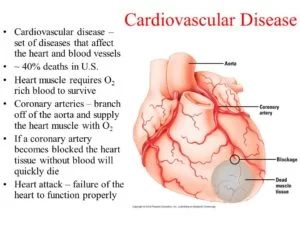
The list of studies that show that aerobic exercise prevents or reduces the occurrence of cardiovascular disease is so long that it would take this entire article and probably five others just like it to review all of the research. One of the most important is one of the earliest. In a study of more than 13,000 men and women, it was shown that the least fit individuals had much higher rates of cardiovascular disease than fit individuals in some cases, the risk was twice as high. Aerobic exercise works in many ways to prevent heart disease; two of the most important are by reducing blood pressure and allowing blood vessels to be more compliant (more compliant means that they become less stiff and it’s less likely for fat to accumulate and clog up the vessels). Results like these have been proven over and over again.
OBESITY AND WEIGHT CONTROL :
Aerobic exercise is believed by many scientists to be the single best exercise for obesity. You can lose weight without exercise by reducing your caloric intake enough so that you burn more calories than you consume, but it takes a regular dose of exercise to keep your weight off. How much is not clear, but somewhere between 30 and 40 minutes of vigorous exercise several times per week, to 45 to 75 minutes of moderate-intensity exercise five or more days per week is probably about right.
Your mileage will vary, and so once you get to the weight that you want to be at you’ll need to experiment with different amounts of exercise until you find the one that works for you. The American College of Sports Medicine recommends that overweight and obese individuals progressively increase to a minimum of 150 minutes of moderate-intensity physical activity per week, but for long-term weight loss, overweight and obese adults should eventually progress to 200 to 300 minutes per week of moderate-intensity physical activity. These are general guidelines, and so again, you need to experiment to see what works for you. Aerobic exercise definitely burns lots of calories. Below is a table of minutes of continuous activity necessary to expend 300 calories based on your body weight.
COGNITIVE FUNCTION-
Scientists have recently become interested in the effects of aerobic exercise on cognitive function. It has been shown in rats that the use of a running wheel every day stimulates new brain cells to grow in as few as 12 days. Brain cells in humans can’t be studied directly, but what has been shown is that rates of dementia and Alzheimer’s disease are lower in older individuals who exercise three or more times per week compared with older adults who exercise fewer than three times per week. In some cases, the risk is 62% lower. Evidence is also accumulating that active individuals perform better on cognitive function tests such as tests of memory and spatial relations than sedentary individuals.
Aerobic Exercise Program
Keep it simple, keep it practical, keep it convenient, keep it realistic, keep it specific, and don’t try to make up for years of inactivity all at once. Select any activity and amount of time where the probability of sticking with it is high. You may not love walking, but if you can do it right outside your door, it requires no special equipment, and you already know how to do it (you’ve been walking your entire life!), then walking might be your best bet for getting started because it’s so convenient.
HEART RATE RESERVE
Heart rate rises during aerobic exercise. It can rise from 70 beats per minute (bpm) at rest to as high as 170 bpm or even higher during exercise, depending on the intensity of the exercise, your fitness level, your age, and other factors. Whether your training is aerobic or anaerobic is determined by the intensity of your workout, and monitoring the intensity is the key to knowing which one you’re doing.
For many individuals, simply monitoring how the body feels while exercising is enough to determine the proper aerobic intensity. “warm and slightly out of breath” is the cue for aerobic activity; that is if you feel warm and slightly out of breath while you’re exercising, then that’s good enough.
Heart-rate reserve method for calculating a target heart rate. Here’s the formula and an example of the method for someone 27 years of age, assuming a resting heart rate of 70 bpm, and a training range of 70%. If you plug in other values, you can get other ranges.
220-age = Max HR.
Subtract resting heart rate from Max HR = Heart Rate Reserve (HRR).
Multiply HRR times the percent you want to train at.
Add back resting heart rate.
Assuming a resting heart rate of 70 bpm, 27 years old, and 70% training range:
220 – 27 = 193
193 – 70 = 123
123 x .70% = 86
86 + 70 = 156
Please note: There’s been some recent research to suggest a new way of estimating maximum heart rate. The formula is the following:
Multiply 0.7 times your age
.
Subtract that number from 208.
An example if you’re 26 years old is: 0.7 x 26 = 18, then 208 – 18 = 190. You’d then take 190 and plug it in as usual to the formula above. This new
the formula makes a slightly bigger difference as you get older.
TRAINING METHOD OF AEROBIC EXERCISE :
The main methods of aerobics exercise are:
- LONG DURATION CARDIO
2. INTERVAL TRAINING
1. LONG DURATION CARDIO :
Long Duration Cardio is the moves that you perform for an extended period at a steady pace.
- For example, a walk for one hour at a speed of 4 mph or a 30-minute run at 6 mph.
- This burns a lot of calories
- The longer the duration, the more calories get burnt.
- It gives the daily calorie deficit which is sought after for losing weight.
- This is great for heavier people.
- It can be used as a starting point for workout programs as it will help in increasing endurance and will prepare the body for further exercising.
EFFECTS
The effects of Long Duration Cardio are more immediate.
- While doing these exercises, you have the “burn,” which means you burn calories even as you are working out.
- They don’t have any after-effects.
- There is no hike in the metabolic process after you stop performing this cardio.
2. INTERVAL TRAINING :
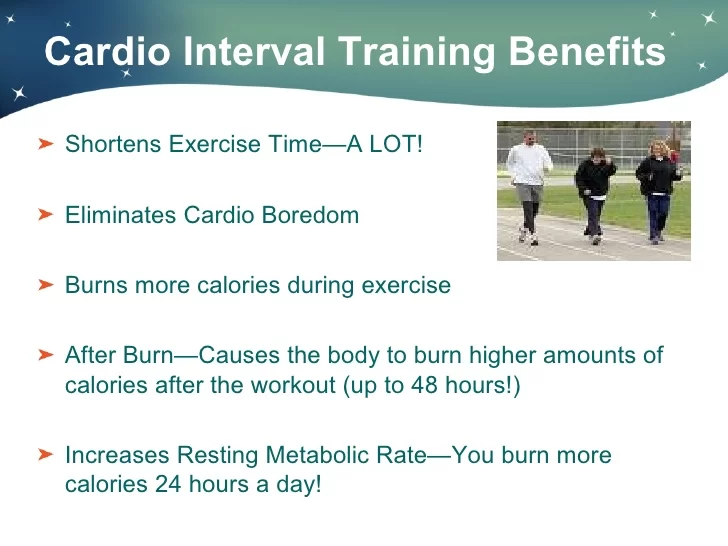
Interval Training workout comprises alternate high and low-intensity intervals.
- Like any other cardio workouts, these increase the calorie burn and build endurance.
- These give better and faster results in less time compared to Long Duration Cardio.
- These can be the second step for the weight loss program and is better for people who have better endurance than beginners.
- EFFECTS
- An ideal Interval Training session will include alternate short, high-intensity intervals and longer, lower-intensity recovery periods.
- In high-intensity intervals, maximum effort (as hard as you can) is required (this is a form of anaerobic exercise).
- For beginners, it can be a little less intense, which can be in a little more aerobic form.
You’ll know that you have reached your high-intensity period when you’ll have muscle burn (the burning sensation the muscle utilized). - Adding a few of these intervals can give better results.
- As these are very hard and taxing they are needed to be kept short and should be accompanied by longer lower intensity intervals (which are even called recovery intervals, as you recover from the burn of the muscle).
- In a complete workout, there are five to ten cycles of high and low intensity. According to your fitness, you can vary the lengths of each interval, the number of cycles, and the intensity of the cycle.
HEART RATE TRAINING
Let’s use jogging on a treadmill as the aerobic activity in this example. For example, if your heart rate is at 70% of your predicted maximum when you jog at 6 mph, then start at that speed and either increase the speed or elevation so that your heart rate increases to 85% or even 90% for one minute, then back to your usual jogging speed for three minutes to elicit a heart rate of 70%. Start with a 1:3 work:active-rest ratio. That’s a good starting point, and as you increase the work intervals and decrease the active-rest ratios like in the examples above, you’ll notice that your conditioning improves so that your heart rate will be lower at higher speeds.
It’s a good idea to plan your intervals in advance. Write them down so that you don’t have to think about them while you’re working out. intervals no more than one to two times per week because they are tough workouts and you will need some time to recover. It’s okay to do aerobic activity on days in between your intervals, but give your body a chance to recover from the intervals before doing them again.
INCREASING DURATION AND INTENSITY
The general rule for increasing aerobic activity is 10% per week. Interestingly, there’s no evidence to suggest that a 10% increase is the safest and most effective amount of time to increase, but that’s the rule of thumb and it seems to work pretty well. So, if you’re walking for 20 minutes then the next increase ought to be two minutes for the following week. The bottom line though is to listen to your body. If you find that increasing by 10% is very easy, then go ahead and try a little more. But if you find that you are tired for hours after your workout, or chronically sore or achy from your workouts, then you know you need to cut back to 10% increases. Learn how to listen to your body and everything should be OK.
EQUIPMENT USED IN AEROBICS:
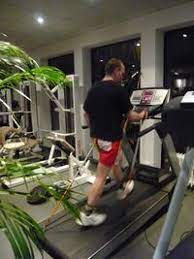
Rowers, treadmills, bikes, and cross-country skiers are all effective if you use them. There is some suggestion that some individuals are more inclined to exercise at home with equipment than at the gym or a class. The activity you choose is a personal choice and it varies for everyone, so you need to experiment until you find what works best for you. Some individuals prefer to go to the gym while others are perfectly content to work out at home on their own equipment in front of their TV. TV can make time pass quickly, and so can your favorite movie, music, scholarly courses taught by professors, or books on tape (see resources for online vendors).

Finding something that will distract you might just make that 30-minute workout bearable, and believe it or not you might even look forward to it! After all, it could be the only 30 minutes in your day that you have all to yourself.
AEROBIC CLASSES-

Classes are generally rated as beginner, intermediate, and advanced. Choose the level that fits your condition. It’s no fun taking an advanced class if you’re a beginner. It will be hard and frustrating and you won’t enjoy the experience. Watch the class or speak with the instructor to help you decide what’s right for you. Sometimes it comes down to the class time that fits your schedule, but just be sure to not get in too far over your head.
Low-impact classes mean that one foot always stays on the ground. They are less intense than high-impact and may be more suitable if you are a beginner. Some classes are now called, “high-low” or “mixed-impact” which means they combine low and high-impact moves. High impact means both feet leave the ground, so there will be jumping and balance moves. Stick with lower impact and more gentle and rhythmic.



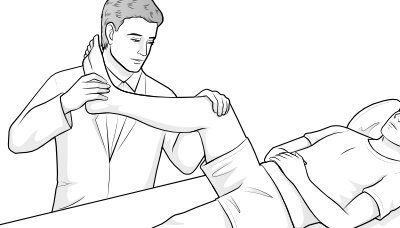
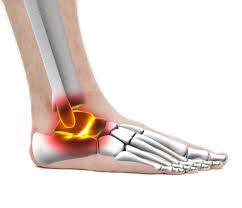
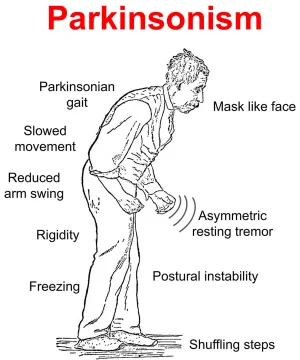
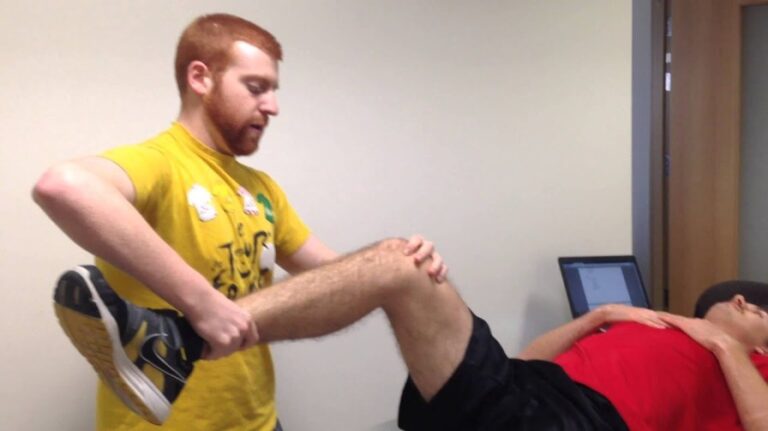
28 Comments